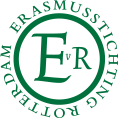Article
Translating the words of Satchidanandan
The sound of a poem

June 13, 2012
Poetry is the forerunner of this admirable tradition, which followed strict rules of poetic composition. The rules were laid down in the grammars dealing with the art of composition. Starting from letters, syllables, sequences of syllables, length of a line, number of lines, alliterations, assonance, similes, metaphors and different types of metres were discussed in detail in these ancient grammars on poetics. N.V. Krishna Warrior discusses in depth the various aspects of the Malayalam metre (A History of Malayalam Metre, Dravidian Linguistics Association, Trivandrum, 1977).
The subjects of the literary works dealt with ranged from the Ramayana and the Mahabharata to Bhakti – the personal relationship to God – and courtesans. This poetic tradition never vanished. Kerala is also known for the literary culture based on the Indian classical language Sanskrit. The long co-existence of these two languages belonging to two different language families – Indo-European and Dravidian – has contributed to the literary growth, and also to a new literary tradition known as Manipravalam, where Malayalam and Sanskrit are combined.
Kerala is also known for experiments and innovations. The great poet Satchidanadan was born and lived for a major part of his life in this beautiful piece of land on the West coast of India. In his interviews and writings, he discusses the literary traditions of Kerala. In his Malayalam translation of the sonnets of Shakespeare, he even used a metre known as Keka, where each line has fourteen letters. It was not very easy for him and the other pioneers of modern Malayalam poetry to introduce a new Malayalam idiom, form and subjects related to social injustice and economic oppression deviating from the rigid classical tradition. As he expressed in one of his poems, it was shouting against the walls (Presence 2). Satchidanandan enjoyed reading the poems of other poets in and out of India, and also enriched the Malayalam language and literature through their translations. His erudition has no limits or borders.
Although I met Satchidanandan a few years ago in Leiden, this is the first time I am involved in the translation of his poems, together with Annette. Trained in the classical poetic tradition (and after translating many of the classical poems), translating the poems of Satchidanadan is a unique experience. It is unique because of the idiom, form, style and subject. For understanding the traditional classical poetry, knowledge of Sanskrit is necessary. The simple style used in the poems of Satchidanandan never formed a hindrance to read, hear and understand his creations. Though it looks like modern prose, the form, the use of Malayalam and the composition together make the poem superb. Satchidanandan has brought poetry nearer to everyone. In a society where tradition and modernity continue to exist side by side, his pioneering work has revived the social revolution.
A Dutch or English translation cannot compete with his original Malayalam poems. Language is culture and culture is language – language and culture are inseparable entities of civilization. During translation, one culture is transformed into another. Language-specific and culture-specific elements are brought nearer to each other in such a way that the message and the medium are not lost in the process of translation.
Religious and mythological symbols are often difficult to translate. Satchidanandan refers to the language of the gandharvas (Presence, A Man With a Door), the passing of the apsaras ( A Man With a Door), the rain of the tretayugam (Presence), dancing on the fire with the kapalas ‘skulls’ (Presence poem 2). Satchidanandan’s poems are intertwined with the symbols of tradition and modernity.
The poetical unity of the diverse elements of culture and language makes the poems of Satchidanandan simple to read and easy to understand. We have tried our best to do justice to the original as well as to the Dutch language. Dutch is also an object of beauty and opens many doors for a beautiful rendering. A comparison of the Malayalam original with the English and Dutch translations reveals the beauty of all the three languages.
Satchidanandan’s poems are full of sounds: the sounds of those nameless faces, the sounds of prisoners, the shoutings which echo vehemently from the high walls, the sound of animals, the sound of ants, the sound of nature, the sound of the approaching train, the crushing sound and at last the sound of poems. Sound is indeed a major component of his poetry. In almost all the poems selected by the author for the Poetry International festival in 2012, we come across his sounds of protest. As he said in one of his interviews, Satchidanandan’s experience forms the basis of his poetry, and he emphasized further that by his experience he meant the experience of the society.
While translating his poems, we came across different expressions of sounds. When reading ‘Vida’ (Farewell), which is dedicated to the Syrian poet Saleh, I stumbled, stumbled and stumbled on his choice of Malayalam words beautifully selected to bring out the sound of despair. The Malayalam original has eight lines and the Dutch and English translations have only four lines! The Malayalam poem did not become a different poem in the translations. The soul of Malayalam is not lost. I have brought it back to eight lines in a new Dutch translation.
It was a pleasure translating his poems into Dutch. I illustrated the sound of his poems with one of the originals and the Dutch and English translations during the Symposium on 13 June 2012.
It is a great honour to translate the ‘untranslatable’ poems of the great global poet Satchidanandan. The translations are still incomplete, because we are improving the translations constantly, and because what we have translated in Dutch is a small part of his great stream of literary creations. You have to hear him to understand his poetry, and that is what I shall do during this year’s Poetry International festival, which has brought together many languages and made them mutually understandable.
Malayalam, the mother tongue of the great Indian poet Satchidanandan, is the language of the Indian federal state Kerala and of about 33 million people living in this part of India, known as God’s own country. It is also the mother tongue of a big Indian diaspora living and working in the Emirates, Europe and the United States of America.
Kerala is not only known for the spices and its relationship with the Netherlands through the Dutch East India Company, but also for the highest literacy rate in India. Printed media is flourishing and it has a very high rate of readership. The state is also known for its progressive thinking, which is expressed through the writings of its great visionaries. It has also witnessed a long-cherished literary tradition starting from at least the twelfth century.Poetry is the forerunner of this admirable tradition, which followed strict rules of poetic composition. The rules were laid down in the grammars dealing with the art of composition. Starting from letters, syllables, sequences of syllables, length of a line, number of lines, alliterations, assonance, similes, metaphors and different types of metres were discussed in detail in these ancient grammars on poetics. N.V. Krishna Warrior discusses in depth the various aspects of the Malayalam metre (A History of Malayalam Metre, Dravidian Linguistics Association, Trivandrum, 1977).
The subjects of the literary works dealt with ranged from the Ramayana and the Mahabharata to Bhakti – the personal relationship to God – and courtesans. This poetic tradition never vanished. Kerala is also known for the literary culture based on the Indian classical language Sanskrit. The long co-existence of these two languages belonging to two different language families – Indo-European and Dravidian – has contributed to the literary growth, and also to a new literary tradition known as Manipravalam, where Malayalam and Sanskrit are combined.
Kerala is also known for experiments and innovations. The great poet Satchidanadan was born and lived for a major part of his life in this beautiful piece of land on the West coast of India. In his interviews and writings, he discusses the literary traditions of Kerala. In his Malayalam translation of the sonnets of Shakespeare, he even used a metre known as Keka, where each line has fourteen letters. It was not very easy for him and the other pioneers of modern Malayalam poetry to introduce a new Malayalam idiom, form and subjects related to social injustice and economic oppression deviating from the rigid classical tradition. As he expressed in one of his poems, it was shouting against the walls (Presence 2). Satchidanandan enjoyed reading the poems of other poets in and out of India, and also enriched the Malayalam language and literature through their translations. His erudition has no limits or borders.
Although I met Satchidanandan a few years ago in Leiden, this is the first time I am involved in the translation of his poems, together with Annette. Trained in the classical poetic tradition (and after translating many of the classical poems), translating the poems of Satchidanadan is a unique experience. It is unique because of the idiom, form, style and subject. For understanding the traditional classical poetry, knowledge of Sanskrit is necessary. The simple style used in the poems of Satchidanandan never formed a hindrance to read, hear and understand his creations. Though it looks like modern prose, the form, the use of Malayalam and the composition together make the poem superb. Satchidanandan has brought poetry nearer to everyone. In a society where tradition and modernity continue to exist side by side, his pioneering work has revived the social revolution.
A Dutch or English translation cannot compete with his original Malayalam poems. Language is culture and culture is language – language and culture are inseparable entities of civilization. During translation, one culture is transformed into another. Language-specific and culture-specific elements are brought nearer to each other in such a way that the message and the medium are not lost in the process of translation.
Religious and mythological symbols are often difficult to translate. Satchidanandan refers to the language of the gandharvas (Presence, A Man With a Door), the passing of the apsaras ( A Man With a Door), the rain of the tretayugam (Presence), dancing on the fire with the kapalas ‘skulls’ (Presence poem 2). Satchidanandan’s poems are intertwined with the symbols of tradition and modernity.
The poetical unity of the diverse elements of culture and language makes the poems of Satchidanandan simple to read and easy to understand. We have tried our best to do justice to the original as well as to the Dutch language. Dutch is also an object of beauty and opens many doors for a beautiful rendering. A comparison of the Malayalam original with the English and Dutch translations reveals the beauty of all the three languages.
Satchidanandan’s poems are full of sounds: the sounds of those nameless faces, the sounds of prisoners, the shoutings which echo vehemently from the high walls, the sound of animals, the sound of ants, the sound of nature, the sound of the approaching train, the crushing sound and at last the sound of poems. Sound is indeed a major component of his poetry. In almost all the poems selected by the author for the Poetry International festival in 2012, we come across his sounds of protest. As he said in one of his interviews, Satchidanandan’s experience forms the basis of his poetry, and he emphasized further that by his experience he meant the experience of the society.
While translating his poems, we came across different expressions of sounds. When reading ‘Vida’ (Farewell), which is dedicated to the Syrian poet Saleh, I stumbled, stumbled and stumbled on his choice of Malayalam words beautifully selected to bring out the sound of despair. The Malayalam original has eight lines and the Dutch and English translations have only four lines! The Malayalam poem did not become a different poem in the translations. The soul of Malayalam is not lost. I have brought it back to eight lines in a new Dutch translation.
It was a pleasure translating his poems into Dutch. I illustrated the sound of his poems with one of the originals and the Dutch and English translations during the Symposium on 13 June 2012.
It is a great honour to translate the ‘untranslatable’ poems of the great global poet Satchidanandan. The translations are still incomplete, because we are improving the translations constantly, and because what we have translated in Dutch is a small part of his great stream of literary creations. You have to hear him to understand his poetry, and that is what I shall do during this year’s Poetry International festival, which has brought together many languages and made them mutually understandable.
© Dr A.G. Menon
Sponsors
























